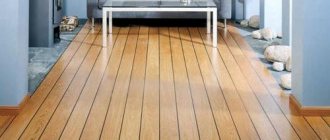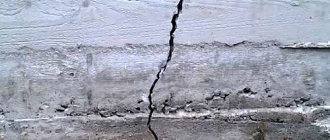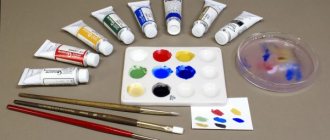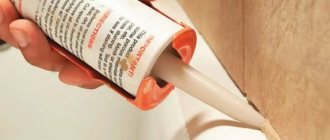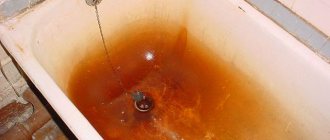People make their lives as comfortable as possible by constantly inventing something. Thus, bathtubs made of steel and cast iron are replaced with acrylic ones. To the positive qualities, you can add one negative point - the tendency of the coating to damage. However, they are easy to eliminate at home if you know what and how to seal an acrylic shower bathtub.
Preparation for repair
Preparation is a very important stage that should not be missed. The quality of the repair and its service life will depend on its implementation. As mentioned earlier, the chip needs to be repaired immediately. If this is not done, rust may form and must be removed. If the chip is fresh, then this stage of preparation can be skipped.
- Removing rust. To do this, you will need such improvised means as a knife, needles, and screwdriver. They can be used to remove rust. You can also use a special product to remove it, which is sold in household chemical stores. If it is missing, then a regular cleaning agent will do. After all manipulations, the rust-free chip should be rinsed well with water.
- You can also remove dirt using household chemicals. It must be remembered that such products should not contain abrasives.
- After complete cleaning, the repair area is washed well and thoroughly dried with a hairdryer. The surface should be perfectly clean and dry.
- Degreasing is a necessary procedure, without which the durability of the seal will be significantly reduced. Degreasing is carried out using acetone, then dried again with a hairdryer.
At this point the preparation can be considered complete. All photos and the preparation process can be seen in this article or in the gallery on our website. After this, you can begin repairing the chipped bathtub enamel. This can be done in several ways and using various materials, which will be described below.
Bathtub restoration - step-by-step work on removing chips from the bathtub
Necessary materials
- The main and most necessary material is car putty. A little is required, and its color should be as light as possible. There is a special putty for fiberglass that will also work. Its advantage is heat resistance, but its price is higher.
- Sandpaper. You also need a little of it, maximum 1-2 sheets. It should be small, you can take the cheapest one.
- A special aerosol designed for direct repair of chips. Its color should match the color of the bath itself. The price category does not matter, but if you have the opportunity to choose a better model, then it is better to choose an aerosol with heat and water resistance.
- Instead of an aerosol, you can use bath enamel. It will already have all the necessary characteristics.
- Abrasive polishing paste. Necessary for the final stage to mask traces of repair.
In order not to buy all the components for repair separately, you can immediately purchase a ready-made kit for repairing chips. Such kits usually include the following components: putty, spatula, sandpaper, aerosol and/or enamel.
How to repair a chipped enamel in the bathroom - using a ready-made kit or individual materials - does not matter.
Repairing chips
Preparation of putty. To do this, you need to mix the resin and hardener, and there should be thirty times more resin. The mixture is mixed with a spatula and immediately applied to the chip. At the same time, it needs to be compacted well. You can put in a little more than you need: all excess can be removed first with the same spatula, and after hardening, leveled off by sanding. If the quantity is not enough, then most likely the repair will have to be carried out again.
Fixing chips in the bathtub
Preparing a bathtub for enameling or acrylic application
Although these methods have their own characteristics, the preparation procedure is completely identical. It is necessary to remove the layer of old enamel and achieve maximum adhesion of the future coating to cast iron/steel.
It is necessary to prepare the following materials and devices:
- cleaning powder;
- solvent;
- fabric-based sandpaper (for example, P24);
- quick-hardening polyester automotive putty;
- polyethylene, newspapers and masking tape;
- vacuum cleaner (or wide soft brush);
- grinder + grinding wheels;
- clean, lint-free cloth;
- construction hair dryer;
- screwdriver
Step 1. Clean the entire surface of the bathtub with a brush and an abrasive agent (powder).
Step 2. Take sandpaper and clean the bathtub until risks from abrasive appear. There is no need to rinse off the cleaning agent when sanding. Instead of sandpaper, you can use an angle grinder with a special attachment. This will greatly simplify the work and speed up the preparation process.
Step 3. After sanding, thoroughly rinse off all crumbs and soap film. We etch the bath using oxalic acid. Neutralize the acid with soda.
Step 4. Fill the bathtub with hot water up to the sides. We wait about 10 minutes, open the drain to let the water drain, and then wipe the bathtub dry with a cloth. You can warm up the vessel with a hair dryer. This way, the moisture will quickly evaporate and the bathtub can be further prepared for restoration.
Step 5. Inspect the bathtub for major defects and potholes. We apply automotive putty, and after it dries, we sand it with fine sandpaper. Remove dust with a vacuum cleaner/soft brush, then thoroughly degrease the entire surface of the plumbing fixtures with a solvent and wipe with lint-free wipes.
Step 6. Unscrew the shower hose. We wrap the spout and taps in polyethylene so that drops of water do not fall into the bath during operation.
Step 7. Armed with a screwdriver, remove the drain grate and siphon under the bathtub. We place a container under the drain hole into which drops of acrylic or enamel will flow.
Step 8. Cover with masking tape all surfaces that are adjacent to the vessel being restored. We cover the floor, the washing machine next to it, and the sink with polyethylene or old newspapers.
Let's begin the restoration process.
How to remove a chip on an acrylic bathtub
First of all, you should understand that a chip is not a scratch and simply polishing the damaged area will not work. In addition, deep defects often become breeding grounds for fungus, mold and bacteria, so restoration work must be completed.
Surface preparation
First of all, the area where the defect is found needs to be prepared. Otherwise, no one can guarantee you that the chip will not appear again in a short time. Surface preparation is as follows:
- Sand the area with sandpaper, starting with a coarse grit and ending with a finer one.
- The chip should be washed thoroughly using detergents with a disinfecting effect. This is done in order to completely remove dirt.
- Next, the area should be degreased to remove fat from the surface. If you ignore this preparation stage, then it is likely that the putty that you will apply simply will not “adhere” to the acrylic.
- At the end of all preparatory work, the surface of the bathtub must be dried very well. To speed things up, you can use a hair dryer or dry rag.
Once you have completed all the steps, you can proceed directly to removing the chip on the acrylic bathtub.
Removing chips on the surface of an acrylic bathtub
A masking pencil is not suitable for removing this type of damage, since it will not be able to repair the pothole itself. To restore the evenness of the surface, you will need special repair kits. As a rule, they all have the same equipment, and it includes:
- liquid acrylic (varies in shade);
- hardener - added to acrylic to increase hardening properties;
- sandpaper for grouting;
- polishing paper;
- degreasing agent;
- epoxy glue for fixing small scratches.
Of course, the repair kit may differ in content, but, as a rule, it is a standard set that includes all the necessary components. Additionally, the repair kit includes a special rubber spatula for easy application of liquid acrylic.
Further, the principle of work is as follows:
- dilute acrylic with hardener according to the instructions;
- apply the mixture to the damaged area flush with the surface of the bath, distributing it evenly with a spatula;
- level the mixture as much as possible;
- cover with film (ordinary food film secured to the wall with tape is suitable);
- leave until completely dry, but not less than 24 hours;
- remove the film and degrease the surface (for example, with alcohol);
- polish the area.
In conclusion, we can say that removing a chip on an acrylic bathtub is certainly not an easy task. However, if you approach this issue correctly and responsibly, you can restore the appearance of the bathtub in less than three hours.
Repair of acrylic bathtub insert
If an acrylic liner is installed in your bathtub and it cracks and water gets between the bathtub and the insert, then it’s not a problem! We will remove the water with special adsorbents, fill the voids with a special quick-hardening material and seal the crack itself.
It will be practically unnoticeable.
If the liner has become completely unusable and completely collapsed, then we can dismantle it without damaging the tiles and walls, clean the surface of your bathtub from mastic, foam and mold and make a high-quality coating of the bathtub with acrylic high-strength enamels.
Installing an acrylic liner in an old bathtub
This used to be a very good way to extend the life of your old bathtub, but today it is a very risky operation.
Indeed, acrylic is a very durable material and is quite difficult to damage, but now acrylic bathtub inserts are made from low-quality materials that are not very durable, easily crack, delaminate and are subject to various deformations. At the bottom, such liners are only 1.5-2 ml thick.
which is guaranteed to lead to cracks within a very short time. Repairing an acrylic bathtub liner is quite a labor-intensive operation, because you never know what’s underneath it. The crack opens completely and there may be old epoxy coating, mold, water and just wet rotten dirt.
Everything needs to be dried and degreased, and special quick-hardening cement must be placed into the crack very quickly. Then a nylon or very fine metal mesh is placed in place of the crack, depending on the size of the crack itself. After drying, everything needs to be puttied, sanded and painted in color.
Melts from cigarettes, incorrect choice of detergent, damage from falling heavy objects make the use of the bathtub insert difficult
The technology for their installation is very often not followed; the process (due to the fault of some craftsmen) is made as cheap as possible! Therefore, pay attention to the documentation and terms of warranty repairs.
Recently, a large number of orders have been received for the repair of liners due to cracks and water ingress.
For a greater guarantee, you can get an advertising newspaper from 3-8 years ago, find the company you are interested in and place an order using it
Attention! Be sure to take the pieces cut from the liner from the craftsman (when installing the trim) and measure their thickness and you will be unpleasantly surprised!
Dismantling (removing) the acrylic liner
If the acrylic bathtub liner cannot be repaired, we can remove it and restore the bathtub. The cost of dismantling the liner is 1000 rubles. This price includes cleaning the bathtub from dirt, mastic or foam.
To main
Ways to eliminate chips on a bathtub
For the best solution to the question of how to paint over a chip on a bathtub, it is recommended to use the services of professional craftsmen. They get the job done at a very affordable price.
If you decide to do the repair work yourself, you can use the following methods:
- Use porcelain chips.
- Cover the scratch with dry whitewash, after mixing it with glue.
- Apply spot enamel.
If the bathtub is very old and battered, you can install an acrylic liner or use an acrylic mixture. These options allow you to quickly, efficiently and inexpensively repair an old bathtub.
Surface preparation
The preparatory stage is required when the defect is already old and operating conditions have caused the problem to worsen. If you decide to fix the chip right away, the process will be shorter, without preparation. But, if the crack is old, then carry out the steps described below:
- Remove the rust layer using a knife, needle or screwdriver. You can use a special solution.
- Wash the surface so that no dirt remains, use detergents without abrasive elements.
- Get a clean base, then dry it with a hairdryer.
- Use acetone to degrease the base, then dry it with a hairdryer.
The preparatory stage is required when the defect is already old and operating conditions have caused the problem to worsen.
When to repair damage
Before you begin to decide what to do if the enamel on the bathtub has chipped, you need to understand whether such measures are required.
There are several opinions on this matter:
- There is no need to repair the chip, since a quality result will still not be achieved.
- If you repair the chip, the bathtub will begin to rust under the patch.
- It is necessary to repair the damage, but this procedure is quite complicated and will take a lot of time.
We can say with confidence that it is imperative to take action to restore the enamel if a way to solve such a problem is known. Of course, a perfect restoration will not work, since such events are carried out at a special temperature and under certain conditions, but you can make the bathtub attractive with your own hands.
It is worth mentioning one mistake that some home craftsmen make when repairing chipped bathtubs. To eliminate chips on an enamel container, they heat the problem area using a gas torch or blowtorch. According to such craftsmen, the patch will be better fused with the main coating. Professional plumbing equipment repairers do not recommend performing such measures, as in the future this may cause the entire enamel coating to peel off.
As for the pockets of corrosion that can form in the damaged area, they can form if the question of how to repair a chip in the bathroom is incorrectly decided. In most cases, rust forms when using a regular sealant on stains. This situation leads to the need to solve the problem of removing rust stains.
Repair of serious defects
Damage that leads to a leak in the bathtub and water constantly appears in the room after taking a shower is considered serious. To fix the problem you need fiberglass. Proceed as follows:
- The edges are cleaned with a knife.
- The problem area is sanded with sandpaper.
- Treat with an alcohol solution.
- Epoxy resin is applied.
- Wait for the layer to harden.
- Treat the area again with sandpaper.
- The smooth coating is wiped with alcohol.
- Polish is applied.
Damage that leads to a leak in the bathtub and water constantly appears in the room after taking a shower is considered serious.
Using porcelain chips
To use this method of repairing a chipped bathtub enamel, you must sacrifice a porcelain cup or saucer. In this case, you should choose dishes that match the color of the bathroom. Since most sanitary containers are white, the cup should also be white.
Work to eliminate a defect in the form of a crack or chipped enamel in the bathroom is carried out in the following order:
- The problem area on the enamel coating of the bathtub is thoroughly degreased. To do this, you can use kerosene, gasoline, white spirit and other similar means.
- Then the damaged area is treated with sanding paper and degreased again to remove fine dust.
- A porcelain cup or saucer of a suitable color is broken, and the fragments are ground until fine crumbs are obtained.
- Next, take epoxy glue and mix its components according to the instructions indicated on the package.
- The finished composition is applied to the damaged area.
- Porcelain chips are poured over the glue and the mixture is leveled using a spatula.
- The epoxy composition is left until final hardening, which takes approximately 2-3 hours. After this time, the sanitary container can be used as usual.
This method is suitable not only for eliminating chipped bathtub enamel, but also in cases where restoration of worn enamel is required.
Why do cracks appear?
Before the upcoming work on repairing an acrylic bathtub, if a crack or chip occurs, it is necessary to understand the causes of the problem.
The main types of damage are divided into two types:
- Damage that occurs due to mechanical influences: heavy objects falling onto the surface, burning of the coating. Cracks and crevices on the surface of an acrylic bathtub can be caused by the heavy load on it.
- Chemical exposure. An acrylic bathtub cracks after treatment with detergents that contain chlorine and oxalic acid.
Due to improper use, the walls and bottom of an acrylic bathtub become covered with scratches, chips and cracks. These defects usually only spoil the appearance, but in no way affect its functionality for washing. To return the bathtub to its original appearance, you can carry out renovation work at home.
To repair plastic bathtubs yourself, you need a lot of patience and a little knowledge. The whole theory about troubleshooting polymer products is in front of you. You just need to get down to business.
What should I do to repair a crack in an acrylic bathtub? Before repairing a cracked coating, you need to buy repair materials separately or buy a special repair kit.
Damage Prevention
In order to avoid various types of defects, it is necessary to follow all instructions for bathtubs. Taking into account all the requirements of the product, you can keep its appearance perfect for many years. Basic rules for proper use of bathtubs from professionals:
- do not place metal or other objects that can damage the enamel in the bathtub or on its edges;
- the cleaning agent must be soft, it must not contain any kind of abrasives, and the use of chlorine bleaches is also unacceptable;
- If possible, protect the bath from sharp objects;
- during repair work, the bathtub should be covered with a thick film;
- Do not use for cleaning or pour substances containing acid onto the product;
- the bathroom itself must have fairly thick walls;
- You can't jump in the bathroom, even for a child.
How to prevent breakdowns of polymer plumbing?
When using acrylic products, it is necessary to observe certain conditions, ignoring which you may subsequently encounter the need for repairs:
- The melting point of acrylic is 150°C, because of this it is highly not recommended to pour boiling water into a bathtub made of this material in order to avoid deformation.
- It is not recommended to place basins in bathtubs made of acrylic in order to avoid the formation of chips and cracks.
- To prevent the formation of cracks and other mechanical damage in the bathtub, you should avoid dropping heavy objects into it.
Unfortunately, many users ignore plumbing “signals” about an approaching accident:
- The creaking of an acrylic bathtub indicates that the plumbing was initially installed incorrectly or that the bottom and walls of the device are quite thin. But there are ways to eliminate this nuisance.
- If the acrylic bathtub sags, you can place bricks or blocks under its base. This method is suitable for those who have a bathtub covered with a plastic screen. This solution will reduce the load on the inner surface of the bath and prevent the appearance of cracks.
- Look at the acrylic bathtub in the light; if it is translucent, it is bad. But if you nevertheless purchased such a product, do not be upset, it can be enhanced with the help of latex paint, which is applied to the surface using the pouring method. This will strengthen the surface of the bath and prevent the appearance of various defects.
Many people wonder how long can refurbished plumbing last? If the restoration is done with high quality, then such products can last from 2 to 5 years. Considering the fairly low price for this work, this is quite profitable.
An acrylic bathtub can be restored with almost any type of damage, so there is no need to quickly get rid of old equipment. Almost any person whose hands grow from the right place can restore the former integrity and original appearance of an acrylic bathtub with their own hands. The most important thing is to read the instructions, have the necessary materials and tools on hand, and naturally do not be afraid of physical work.
Types of possible damage
Depending on the type of bathtub and its material, damage may also vary. The most common are acrylic, cast iron and steel bathtubs. They may all have similar damage that you can fix yourself. Glass, wooden and marble bathtubs cannot be repaired: such models are considered exclusive, and without the help of a specialist, everything can only get worse.
Repairing chips in the bathtub with your own hands
The most common possible damages are:
- chipping is a fairly common type of damage. It is better to seal it immediately and not wait for it to increase;
- scratches – this problem is most serious for acrylic bathtubs, since deep scratches can lead to the bathtub splitting;
- splitting – applies only to acrylic bathtubs and may be the result of a deep scratch or a bathtub that is too thin;
- rust - can be present in almost any bathtub;
- a hole is a defect that is the most labor-intensive to repair. Only a specialist or a special insert can help here.
What to do if the coating has peeled off?
Often, when buying a cheap product, after some time the acrylic delaminates and swells. What can contribute to this:
- Installation errors. The bathtub shakes, the walls are deformed, which leads to peeling of the coating.
- Poor quality material.
In order not to encounter such problems, read our special articles: How to choose a high-quality acrylic bathtub? And how to install it correctly?
What to do if the acrylic is still swollen, how to glue it?
It is necessary to glue it back using a special adhesive for polymer products. If the “bubble” is not cracked, you need to pierce it with a syringe with a thick needle and inject glue into it.
If there is a crack, slightly bend the peeled layer and use a syringe to evenly distribute the composition so that the entire delamination is glued.
Further actions are the same as for restoration of cracks.
There is a more radical and high-quality, but less accurate approach. You need to cut off all the swollen acrylic and instead fill this place with the liquid composition from the repair kit. Performing the same procedures as when eliminating a breakdown ( STEP 5 and STEP 6 of the previous chapter). In this case, the integrity of the coating will definitely be restored, but such a patch will immediately catch the eye. Which method to use is up to you.
How to seal a crack in an acrylic bathtub
Acrylic bathtubs are much lighter and “warmer” than traditional steel and cast iron bathtubs. It is thanks to these advantages and reasonable price that products made of polymer materials are increasingly being installed in apartments and houses.
However, with all their advantages, lightweight acrylic bathtubs are sensitive to external influences.
The material tends to expand at high temperatures, it is easily scratched by abrasive detergents, and if heavy objects fall in such a bath, cracks or even holes can form.
Can acrylic bathtubs be repaired? What to do if an acrylic bathtub bursts? Is it possible to seal it?
Yes, bathtubs made of polymer materials are repairable, and you can fix the crack yourself without turning to specialists for help.
However, ordinary universal glue will not work for these purposes.
Since acrylic has unsatisfactory adhesive properties, you will need a special moisture- and heat-resistant glue.
Theoretically, you can block a crack or small hole in an acrylic bathtub using any sealant, but it should be taken into account that during operation the bathtub bowl will continue to be subject to constant mechanical deformation, as well as exposure to high temperatures and aggressive liquids.
In this regard, restoration repairs must be carried out in 2 stages: from the outside and from the inside.
Accordingly, to seal the bathtub you will need two completely different compositions: two-component epoxy glue and acrylic putty.
To reinforce a cracked bathtub from the outside, the simplest (inexpensive) brands of epoxy glue are suitable, for example:
“Contact” is a universal 2-component epoxy adhesive. The composition is colorless, not afraid of moisture, glued products can be used at high temperatures (up to 150 degrees).
The adhesive contains epoxy resin, a composite hardener, and modifying additives.
Contact glue has increased fluidity, fills cracks and voids, restoring the shape of the product, does not shrink or expand during the curing process. Sold in convenient dosage packaging (double syringe), costs about 120 rubles;
Moment SUPER EPOXY is a universal two-component adhesive, supplied in the form of a set of two combined tubes (epoxy resin + hardener).
The glue mixing ratio is 1:1, which simplifies the process of preparing the composition.
When cured, epoxy adhesive from the Moment brand does not expand or contract, and is not afraid of exposure to water and aggressive liquids. After application, the glue hardens within 5 minutes, and after an hour it completely sets.
A special repair kit, which is sold in plumbing stores and includes everything you need, will help you seal a crack on the outside of an acrylic bathtub:
- acrylic reducer (liquid acrylic);
- hardener;
- a set of sandpaper;
- putty knife;
- polishing compound and polishing cloth.
On sale today you can find repair kits from different manufacturers; they are sold under the trademarks “Remakril”, “Samodelkin”, “New Bath”, etc., and cost on average about 500 rubles.
There are also more expensive imported analogues, but their composition differs little from Russian ones.
Ready-made kits for repairing bathtubs and acrylic trays
To seal a crack in an acrylic bathtub, you will need the following materials and tools:
- Epoxy adhesive;
- Reinforcing fiberglass;
- Brush;
- Acetone;
- Drill and drill bit with a diameter of 1-2 mm;
- Repair kit with liquid acrylic.
The process of eliminating cracks itself consists of several successive stages:
- To begin with, further expansion of the crack should be prevented. To do this, holes with a diameter of 1-2 mm are drilled on each side, a few millimeters from the edges;
- Then it is necessary to strengthen the damaged area with a reinforcing patch from the back of the crack. Fiberglass patches should be glued in several layers using epoxy glue. This should only be done on a surface that has been previously degreased and free of contaminants.
- The composition is applied in an even layer using a brush and laid with fiberglass. After the first layer has dried, glue the second layer. In most cases, 2-3 layers are quite enough to eliminate small cracks;
- After about an hour (see instructions for the epoxy glue), you can begin to eliminate defects from the outside. To do this, the damaged area is treated with fine sandpaper, degreased with acetone and covered with liquid acrylic from the repair kit. After the composition has dried, the surface is treated with polishing paste.
VIDEO INSTRUCTION
Self-repair of plumbing equipment
Repair kits for restoring bathtub enamel
Before repairing an acrylic bathtub, it is worth understanding the main problems and causes of problems.
The main types of damage to polymer equipment are divided into two types:
- Damage resulting from mechanical impact: heavy objects falling onto the surface, burning of the coating. Also, a crack in an acrylic bathtub occurs due to heavy load on the plumbing;
- Chemical exposure. Do not be surprised if the acrylic bathtub cracks after treating its surface with aggressive detergents containing chlorine or oxalic acid.
In order to repair plastic bathtubs yourself, you will need a lot of patience and a little knowledge. All the necessary theoretical material for troubleshooting polymer equipment is in front of you. So all that remains is to act.
What to do if your acrylic bathtub is cracked? Before repairing existing defects, you should purchase repair materials separately or buy a special repair kit.
What do you need to repair your plumbing?
Tools and materials for bathtub renovation
The standard set of materials for restoring polymer plumbing consists of:
Repair kits for acrylic bathtubs. Review of purchasing options
- rubber gloves and respirator;
- a set of sandpaper;
- liquid acrylic;
- glue for polymer coatings;
- polishes.
Tip: Glue will be needed if there are through holes in the coating. Therefore, you need to have a special composition on hand so that you have something to seal the acrylic bathtub with. The method of restoring plumbing depends not only on the type of damage, but also on its size.
If an acrylic bathtub bursts or minor defects appear on the surface, the instructions for restoring the plumbing will be the same; for more serious damage, a different approach will be needed.
Repair of minor defects
Kit for removing small chips and scratches on acrylic surfaces
First, you need to understand how to repair an acrylic bathtub with small scratches and chips. Materials you will need:
- two-component acrylic;
- epoxy adhesive;
- sandpaper;
- special tape;
Note: Repairing cracks in an acrylic bathtub up to 3 mm in size is done using epoxy glue. If the defects reach large sizes, you should use tape. Repairing a plastic bathtub in this case will begin with the process of degreasing the plumbing. After this, a special tape is glued to the crack, after first removing the film from it.
Repair of an acrylic bathtub with minor defects up to 5 mm in length can be carried out using only the specified materials.
Recovery instructions:
- To improve the adhesion of the glue to the surface of the product, the boundaries of the cracks are slightly expanded with a knife;
- the surface is degreased;
- acrylic paint is diluted with a hardener;
- a small amount of the resulting composition is applied to the area requiring repair;
- the treated areas are sealed with tape for five to six hours;
- then the film is removed, the plumbing fixtures to be repaired are treated with alcohol, and then sanded;
- Polish is applied to the restored part of the plumbing to obtain a shiny finish.
The video repair of acrylic bathtubs clearly demonstrates the process of restoring the coating in case of minor damage. The video explains how to repair a crack in a bathroom and what materials to use during restoration.
Acrylic is peeling off, what should I do?
Adhesive mixtures for filling voids when acrylic peels off
Many people who bought polymer sanitary ware are wondering: why did the acrylic bathtub swell? In some cases, acrylic may separate from fiberglass, i.e. swell. This can happen for a number of reasons:
- Firstly, when an acrylic bathtub wobbles, the load on the surface is distributed unevenly, so the acrylic can come off the walls of the plumbing;
- Secondly, you may have purchased low-quality equipment that used cheap materials.
An acrylic bathtub repair technician can easily fix this problem, but since the procedure is quite simple, you can do it yourself.
Tip: You will need a special glue for gluing polymer materials. You need to make a hole in the place of the swelling and insert glue there. After complete gluing of the layers, repair work is carried out to eliminate the usual crack. The algorithm for restoring coverage in case of damage of this kind has already been described earlier.
Repair of serious defects
Large defects are cleaned with a special tool and a new protective layer of enamel is applied.
If an acrylic bathtub is leaking, this indicates serious through-and-through damage. In this situation, it will be necessary not just cosmetic elimination of defects, but reinforcement. If the acrylic bathtub is crooked, it is better to reinstall it, otherwise it will leak sooner or later.
Restoration of acrylic bathtubs. Types of damage and solutions
If this trouble does occur, you should answer the question: how to repair an acrylic bathtub with such damage? First, you will have to get a piece of fiberglass that will be used to seal the holes. And the work process itself will be like this:
- the edges of the through crack should be cleaned using a regular knife;
- damaged areas are treated with fine-grained sandpaper;
- then the surface is thoroughly wiped with alcohol;
- the defect is covered with a layer of epoxy resin;
- after this, the product should dry for several hours;
- the glued area must be cleaned with sandpaper;
- after the surface becomes smooth, it should be treated with alcohol;
- As soon as the surface is degreased, apply polish to a clean soft cloth and treat the coating.
Don't rush to throw away your plumbing fixtures if your acrylic bathtub is cracked. Often such damage can be repaired. If the work is done well, repaired products can last from two to five years.
How to prevent breakdown?
A durable frame will prevent deformation of the structure and help avoid breakdowns
Unfortunately, most people ignore the “hints” from plumbing that indicate trouble is approaching.
- If an acrylic bathtub creaks, it means that the plumbing was initially installed incorrectly or that the walls and bottom of the equipment are very thin. But there are ways to eliminate this nuisance.
- In a situation where the acrylic bathtub sag, you can place bricks or blocks under its base. This method is suitable for those whose bathtub is covered with a plastic screen. This solution will help to significantly reduce the load on the inner surface of the product and avoid the appearance of cracks.
- Look at the purchased polymer product in sunlight; if the acrylic bathtub is translucent, this is a bad sign. But you shouldn’t be upset, in such a situation you can buy latex paint, which is applied by pouring to the surface of the plumbing fixtures. This will make the equipment stronger, which will reduce the risk of defects.
Many people are interested in the question: can refurbished plumbing last a long time? In any case, equipment restoration will extend the life of polymer products by at least a couple of years. Considering the relative cheapness of the procedure, this event is quite profitable.
Damage restoration methods
Chips on the bowl appear quite easily. A small physical impact is enough and a piece of the coating bounces off. Steel products are especially often affected. If the chip is not repaired in time, this can lead to corrosion of the entire bowl and then replacement of the bathtub cannot be avoided. Special materials for reliable surface restoration have become freely available relatively recently.
A mixture of BF-2 glue and any filler (tooth powder, chalk). The glue reliably seals the damage, but the filler, due to its porous structure, allows moisture to pass through well. Epoxy resin and porcelain powder. Grind the porcelain into powder and sprinkle the epoxy resin over the damage. After drying and sanding, a patch is obtained. The method gives a controversial result, since after drying the resin can easily break off from the steel surface.
Special modern materials restore damage with high quality and are almost invisible on the surface. The most readily available are automotive enamel or putty. They easily and permanently repair chips and scratches. The main thing when applying is to adhere to the technological process.
Tools and materials for bath restoration
The standard set of materials for restoring polymer plumbing includes:
- respirator and rubber gloves;
- a set of sandpaper;
- liquid acrylic;
- adhesive for polymer coatings;
- polish.
Tip: Glue is necessary when there are through holes in the coating. Therefore, in order to be able to seal an acrylic bathtub, you need to have a special composition on hand. The method of restoring plumbing directly depends not only on the types of damage, but also on their scale.
Ready repair kit
A repair kit is the simplest and most effective method of restoring a bathtub. Different manufacturers have different price categories, as well as operating instructions. The kit may include a putty mixture, a spatula for mixing, sandpaper for acrylic and enamels, and a spray for finishing coat. Typically repairs include the following steps.
- Cleaning up the chip. Dirt and rust must be thoroughly removed. Then degrease the surface with baking soda and dry it or treat the chip with acetone.
- Preparation of putty. Putty and hardener usually come in different bottles. It is necessary to combine them in proportions according to the instructions, mix thoroughly with a spatula, apply evenly to the chip and wait the time specified by the manufacturer (usually 30 minutes).
- Leveling the surface. After the putty has hardened, it will need to be cleaned with sandpaper. Ideally, you should not feel a transition between the grout and enamel.
- Painting. The dye is sprayed onto the chip site with aerosol paint from a distance of 15-20 cm. It is better to do this in several stages with an interval of 2 minutes. After you have applied several layers and you see that the colors of the enamel and the patch match completely, let the paint dry. After two hours the chipped area can be touched, and after four days the bathtub will be ready for use.
Using a repair kit, you can almost completely recreate the enamel coating of a white acrylic, cast iron, or ceramic bathtub. The disadvantage of this method is that a good set cannot be purchased at every hardware store. In addition, the color of the enamel of the bath and the aerosol may not completely match, which happens in 90% of cases.
Applying enamel
You can enamell not only a bathtub, but also a shower tray made of steel and cast iron, a washbasin, and a kitchen sink. Both the entire surface of the plumbing fixtures and individual areas are restored, if necessary.
This method of restoration is short-lived, but quite economical. A painted bathtub will serve you for another couple of years, after which you will again have to think about painting or replacing it.
Step 1. Open the enamel and hardener. Pour them into a convenient bowl and mix with a mixer until smooth (see the exact proportions on the package).
Step 2. We begin to apply the enamel with a brush, making first horizontal and then vertical strokes. Carefully paint the entire bath.
Step 3. Without waiting for the first layer to dry, apply the second. Gently stretch out the smudges with a brush.
Step 4. Paint the bottom of the vessel again.
The bath will be ready for use in about 5 days. Until this point, it is advisable not to turn on the water and prevent dirt from getting on the painted surfaces.
Types of baths and methods of repairing damage
- Acrylic.
- Cast iron.
- Wooden.
- Steel.
- Glass.
- Made from natural stone.
Wooden, glass and natural stone models are almost impossible to restore on your own. There is too much risk of completely ruining the surface.
Another thing is bathrooms with an enamel surface. Their restoration will not require much expense or effort. The main thing is to start the recovery process immediately, without delaying it.
- Any chips on acrylic surfaces must be restored immediately. Any damage allows moisture to get inside the material and can ruin the acrylic bowl.
- Rust. Regardless of what material the hot tub is made of, rust on it can appear on almost any type of coating.
- Scratches. Products made of acrylic and cast iron suffer most often from scratches. A scratch on an acrylic surface is much more dangerous than on a cast iron surface. A deep scratch that is not repaired immediately can grow larger and cause it to split or break the bottom or sides of the bowl.
- Split. A real problem with “acrylic” bathtubs is that the bottom or walls are too thin.
- Through hole. Can appear in a bowl made of any material. If you can repair chips and scratches yourself, then with a through hole, you cannot do without the help of professionals in restoration. You can only try to install the liner yourself.
Means for sealing cracks, potholes and chips
If to eliminate minor scratches it is enough to perform high-quality grinding and polishing with felt, then repairing cracks and potholes is a process that requires a lot of effort. To eliminate such defects with your own hands, you will need a special repair kit for working with acrylic bathtubs, which consists of the following components:
- Liquid acrylic, which comes in a variety of shades. Therefore, choosing the appropriate material for a particular bathtub is quite difficult, especially if there are no documents for the sanitary product.
- A hardener, without which it is impossible for liquid acrylic to harden.
- Sandpaper to create a rough effect on the damaged area.
- Polishing paper used to finish the restored acrylic section of the bathtub.
- A special solvent used to degrease the damaged area of the pallet.
- Epoxy adhesive composition, which eliminates minor scratches up to 1 mm deep.
Naturally, the repair kit may also have a minimum set of the most necessary things - liquid acrylic and hardener. In turn, related materials can be purchased separately at a hardware store.
How to use acrylic bathtubs correctly?
Several models of polyacrylic products are produced.
The main difference between them is the quality of the top layer. It should not be destroyed under the influence of mechanical loads and chemicals. If the product is covered with acrylic 5 mm thick, then its service life is 25 years. Thickness below this limit results in reduced durability. Such bathtubs will last no more than 10 years, subject to operating rules. The basic rules are to protect the surface from excessive mechanical stress, and not to treat it with chemicals and reagents. It is necessary to wash the bathtub using special detergents that are made from non-aggressive substances and oxidizing agents. The acrylic bathtub should be wiped with a sponge that does not contain any hard elements. It is not recommended to place heavy bulky objects near acrylic products, or to place metal containers in it.
Acrylic bathtubs are not intended for bathing pets. For many of them, this process causes fear, so released claws can harm the surface. Compliance with these simple operating rules will help maintain the durability of the polyacrylic product. During this time, no repair work will need to be performed. However, troubles do happen and damage of varying degrees occurs on the surface:
- minor damage and scratches;
- areas with chips;
- cracks;
- holes;
- destruction of plastic elements.
To perform repair work at home, you must have a special tool. In addition, you need to listen to the advice of experienced craftsmen.
How to prevent breakdown
To avoid the need to carry out the repair work described above, you should evaluate the condition of the bathtub, both external and internal, in advance. Details that prevent an emerging defect:
- Creaking indicates improper installation of plumbing fixtures or thinness of the coating;
- If there are deflections in the base, then you can place reliable materials under it, for example, bricks, to hide such an addition, cover the area with a plastic screen;
- In the light you will notice gaps, which indicates the unreliability of the coating, then use latex paint and strengthen the base using the pouring method.
In the light you will notice gaps, which indicates the unreliability of the coating, then use latex paint and strengthen the base using the pouring method.
It is possible to repair an acrylic bathtub at home. The process is not very complicated, the main thing is to prepare the surface and tools. It’s better to strengthen the coating in advance, which has become unreliable.
How to repair chips or minor restoration of damage to a bathtub
Sometimes small chips, cracks from fallen heavy objects, or scratches appear on the surface. And in this case, there is no need to carry out a complete restoration; it is enough to carry out minor repairs in the proper sequence.
Previously, such defects were eliminated by mixing glue with tooth powder or applying epoxy to the chip and sprinkling it with porcelain dust. But such methods are extremely unreliable and should be abandoned.
Chip on a cast iron bathtub
Chip on a cast iron bathtub
Step one. We are preparing the chip for repair. First, apply a rust converter to the chip, wait, and wash off the composition with water. Then we clean the chip with powder or dishwashing liquid. Rinse with water and wipe dry.
Step two. Using acetone or another solvent, degrease the defective area. Dry and heat the surface with a hairdryer.
Step three. Using automotive putty, we coat the chip. We wait for it to dry and sand it with sandpaper.
Step four. We cover the putty area with two-component acrylic or automotive enamel.
You can also use a ready-made bathtub repair kit for restoration, which includes acrylic paint, hardener, several sheets of sandpaper, epoxy putty, polish and detailed instructions. The approximate cost of such a kit ranges from 900 to 1300 rubles.
Repair kit
Video - Repairing chips and even through holes in a metal bathtub
- https://derevyannie-doma.com/poleznoe/kak-zakleit-treschinu-akrilovoy-vanny.html
- https://sdelalremont.ru/remont-svoimi-rukami-treshhin-i-skolov-na-akrilovoj-vanne.html
- https://sovety-vannoy.ru/vanna/akrilovaya/remont-akrilovyx-vann-v-domashnix-usloviyax.html
- https://obustroen.ru/komnaty/vannaya/santehnika/remont-treshhiny-v-akrilovoj-vanne.html
- https://remoskop.ru/remont-akrilovoy-vannyi-svoimi-rukami-tehnologiya.html
- https://stroyday.ru/remont-kvartiry/ustanovka-i-remont-santexniki/restavraciya-vanny-svoimi-rukami.html
Repairing a crack on an acrylic surface
If defects in the form of various cracks form on an acrylic bathtub, more thorough and complex repairs are required. For high-quality restoration of damaged acrylic, as mentioned earlier, you will need an appropriate repair kit or a special repair tape. In most cases, the formation of cracks is accompanied by prolonged wear of the bathtub or a fall of a heavy object onto the body.
It is important to eliminate any cracks immediately after they are discovered, before they grow into a global problem. First of all, this is due to the fact that restoration of a bathroom with deep damage requires much more financial and physical costs
A simple and practical way to repair minor cracks in acrylic bathtubs with your own hands is done using epoxy putty and involves the following procedure:
- To begin with, the surface of the bathroom at the site of damage is cleaned using coarse sandpaper. Along the length of the entire damage, a surface approximately a centimeter wide is processed on both sides. First of all, this is necessary to increase the adhesive properties of the epoxy putty and acrylic.
- Using an electric drill, you need to drill 1 mm diameter holes at both ends of the crack. This unusual action is necessary in order to prevent further cracking of the material.
- At the next stage, the damaged area is cleaned of dust and other dirt using water and ordinary soap. To speed up the drying process of the damaged area, you can use a regular hairdryer.
- To repair any acrylic bathtub with your own hands, special two-component compositions are used. Therefore, the hardener is mixed with the main component before directly applying it to the crack. Since the substances included in such mixtures are toxic, you need to worry about quality ventilation in the bathroom. To protect your lungs, it is better to wear a respirator.
- The prepared epoxy putty composition is applied to the cracks and holes drilled with a drill. The putty is applied with a special applicator, which is included in the repair kit.
- It will take at least 12 hours for the composition to harden. After the epoxy putty has dried well, the damaged area is sanded with fine-grained sandpaper until a perfectly smooth surface is obtained.
Minor cracks can also be repaired using a special repair tape. In this case, the initial stage of restoration work is completely similar to the option discussed above. That is, the damaged area is cleaned, drilled at both ends and thoroughly degreased. After the area to be repaired has dried, perform the steps in the following order:
- The repair tape is cut along a length that exceeds the damage site by 2 cm so that on each side of the crack the material extends beyond its edges.
- The repair tape has a protective film that must be removed before use.
- The tape is glued to the crack and air bubbles are carefully removed from under it using a plastic spatula or rag.
While the repaired area is drying, which can take from 3 to 5 hours, water must not come into contact with it. Therefore, you should avoid using the bathroom during this time.



